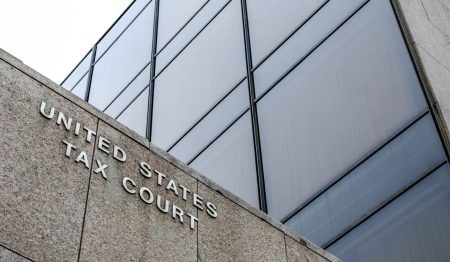Disputes focused on “syndicated” conservation easement transactions have existed for years, but they are far from repetitive for several reasons. One is that taxpayers organizing partnerships whose options include donating an easement tend to closely follow guidance issued by the Internal Revenue Service (“IRS”), court decisions, and other sources. Then, they attempt to avoid potential problems by fully complying with the evolving rules and attitudes. The IRS, for its part, raises various procedural, technical, and valuation arguments. When one of its positions gets shot down by the courts, it simply floats another hoping for a better outcome.
Battles historically have centered on the partnership that donated the easement, claimed the tax deduction, and passed it along to the partners. Things have changed lately, though. The IRS is now focusing more attention on the original landowners; that is, those who contributed the property to the partnership beforehand. Why? The IRS wants to contend, by reference to the original landowners, that the relevant land is not “capital gain” property, as required.
Easement Donation and Valuation Basics
Taxpayers who own undeveloped real property have several options, one of which is to voluntarily restrict its future use for the benefit of society as a whole. This is commonly known as donating a conservation easement.
The value of an easement is its fair market value (“FMV”) at the time of the donation. Case law and regulations under the key tax provision, Section 170 of the Internal Revenue Code, indicate that the best evidence of FMV would be the sales price of other easements of similar type, size, location, etc. The IRS recognizes that such “comparables” are difficult, if not impossible, to find. Therefore, appraisers generally must use the before-and-after method, which requires them to determine the highest and best use (“HBU”) of the property and the corresponding FMV two times. Appraisers first ascertain the FMV as if the property had been put to its HBU, then they determine the diminished FMV taking into account the serious use restrictions imposed by the easement. The difference between these two figures, with some additional adjustments when warranted, normally represents the value of the donation.
Section 170 and its regulations mandate a reduction of the FMV by any amount that would not have been characterized as “long-term capital gain,” if the taxpayer had actually sold the property. Put differently, if the sale of the property would have yielded either ordinary income or short-term capital gain, then the charitable deduction is limited to the taxpayer’s adjusted basis in the donated property.
On a related note, Section 724 provides that if a partner contributes property to a partnership that is considered “inventory” in the partner’s hands at the time of the donation, and if the partnership then sells or otherwise disposes of the property within five years, the resulting gain or loss is treated as ordinary, not capital. The goal of this rule is to prevent partners from converting ordinary income property into capital gain property by simply contributing it to a partnership that has a different purpose for owning the property.
The First of Many Cases
A recent case highlighting the IRS’s new line of attack is Glade Creek Partner, LLC v. Commissioner. There, an entity (“First Company”) bought several thousands of acres of undeveloped land in 2006, on which it planned to create and sell residential lots in three phases: Tract I, Tract II, and Tract III. The First Company spent considerable amounts to complete infrastructure projects, as well as to secure zoning approvals and permits. It then recorded the lots on Tract I, marketed them, and made some sales.
By 2009, the First Company faced a depressed real estate market, large debit, and slow sales. It decided to abandon ship. Another entity (“Second Company”) acquired the remaining lots in Tract I, along with all of Tract II and Tract III, in exchange for taking over the First Company’s debt. The Second Company soon found itself in a similar situation, having trouble servicing the debt. It began looking for ways to get its hands on some cash. Enter an individual experienced in organizing scenarios that might result in a conservation easement donation. He took multiple steps, including forming a partnership that would own the relevant land (“Donor”) and another partnership through which interested parties could invest in the Donor (“Investment Company”).
The basic idea was that the Second Company would contribute the property to the Donor in exchange for a 98 percent ownership interest. Next, the Investment Company would utilize proceeds from its private offering to buy nearly all of Second Company’s interests in the Donor. The Second Company would then use the cash to satisfy its debts. Finally, if the partners in the Donor voted to donate an easement instead of developing the property or holding it for appreciation, then nearly all the charitable tax deductions would be allocated to the Investment Company, and, ultimately, its partners.
The partners voted to donate an easement, which the Donor did. It claimed a charitable donation of about $17.5 million on its tax return for 2012. The IRS later audited, claimed that the Donor was entitled to a tax deduction of $0, and asserted penalties.
Litigation in this case has involved three stops so far, only the last of which is pertinent to this article. The Tax Court identified several key facts, the following among them:
- When the Second Company contributed property to the Donor in exchange for a 98 ownership interest in the Donor, it reduced the size of its inventory.
- The Donor’s Operating Agreement did not describe the character of the property (i.e., as inventory or investment property) or how the Second Company and Donor would report the transaction on their respective tax returns.
- The Second Company’s tax return for 2012 indicated that it was a real estate dealer and the transferred property was inventory.
The IRS took the position that the Second Company held the property as inventory, and this character carried over to the Donor when the property was contributed. Consequently, the Donor’s charitable deduction could not exceed its adjusted basis in the property, which the IRS calculated at $3.7 million.
The Donor disagreed for four reasons. First, it argued that the property was investment property in the hands of the Second Company, not inventory. Second, the Donor suggested that the activities and intentions of the First Company (as opposed to the Second Company) are relevant to determining the character of the property, it acquired all the land as investment property, and only Tract I was later converted to inventory. Third, the Donor maintained that, if the Tax Court were to decide that the First Company initially held the property placed under easement (i.e., Tract II and Tract III) as inventory, it later became investment property in 2009 when the First Company abandoned its plans to develop. Finally, putting aside the First Company, the Donor maintained that the Second Company was organized to hold the relevant property for investment purposes.
Citing standards developed by the relevant Court of Appeals, the Tax Court explained that whether the sale of a particular property will generate ordinary income or capital gain depends on whether the taxpayer was engaged in a trade or business, whether the taxpayer held the property primarily for sale in such business, and whether the sale anticipated by the taxpayer was ordinary in his business. In answering these three questions, the Tax Court explained that it had to consider the following factors: (i) purpose for acquiring the property, (ii) duration of ownership, (iii) extent and type of efforts to sell the property, (iv) the number, continuity and substantiality of sales, (v) the use of advertising and other methods to increase sales, (vi) the degree of supervision or control exercised over any representative selling the property, (vii) the use of a business office to sell the property, and (viii) the time and effort the taxpayer historically devoted to sales.
The Tax Court acknowledged that most of the factors described above center on sales and marketing, there were no lot sales on the donated property (i.e., Tract II or Tract III), and this reality might favor characterizing the property as a capital asset. However, the Tax Court underscored that the factors do not constitute a “balancing test,” no one factor is controlling, and it is free to consider factors outside the list. The Tax Court then indicated that it was placing “significant weight” on the manner in which the Second Company reported the property and transactions on its tax return.
The Tax Court ultimately concluded that neither the First Company nor the Second Company held the property for investment purposes, and this character carried over to the Donor. As a result, the charitable deduction was capped at the Donor’s adjusted basis in the property, which was $3.7 million, as opposed to the $17.5 million originally claimed by the Donor.
Recurring IRS Position
Glade Creek Partner might represent the first conservation easement case that turns on the characterization of the property in the hands of the original landowner, but it surely will not be the last. The IRS, riding high from its recent victory, has started raising the so-called “inventory issue” on a regular basis. Taxpayers involved with easement donations should be aware of this trend and prepare accordingly.
Read the full article here









